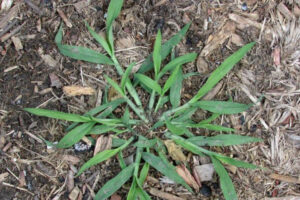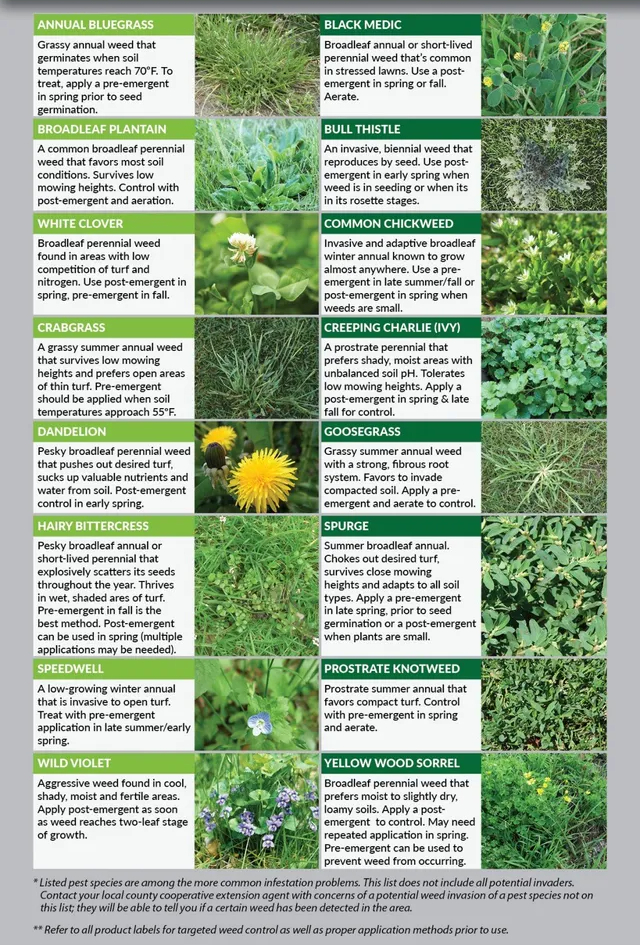 In the winter weeds become dormant and their foliage turns tan. They like the warm temperatures of spring and summer so they can grow. Along with their not-so-pretty appearance, weeds are fierce competitors that will strongly compete with the turf for sunlight, nutrients, and moisture. These weeds are typically quite hardy, are hard to get rid of, spread quickly, and can even handle the hot blazing sun.
In the winter weeds become dormant and their foliage turns tan. They like the warm temperatures of spring and summer so they can grow. Along with their not-so-pretty appearance, weeds are fierce competitors that will strongly compete with the turf for sunlight, nutrients, and moisture. These weeds are typically quite hardy, are hard to get rid of, spread quickly, and can even handle the hot blazing sun.
Ground Ivy
The ground ivy is an aromatic, perennial, evergreen creeper of the mint family Lamiaceae. It is commonly known as ground-ivy, gill-over-the-ground, creeping charlie, alehoof, tunhoof, cats foot, field balm, and run-away-robin. It can even look pretty; however, it is invasive, moving through flowerbeds and the grassy area quickly. It will block the sun, making it hard for your flowers and grass to come through. It is a very quick spreader. Use a consistent application of broadleaf weed product to get rid of it.
Nutsedge
Yellow nutsedge is a troublesome weed. The leaves are light green to yellowish in color, wide (up to 1/2”) with a thick mid-vein and a very waxy covering. The easiest way to distinguish yellow nutsedge from grasses is the triangular shape of the stem. Flowers of yellow nutsedge are a yellowish-brown color and look like a series of spikes. Use a broadleaf herbicide to get rid of this pesky summer weed.
Oxalis
One of the reasons you have a difficult time killing Oxalis in your lawn is because of the way it disperses its seeds. In one plant alone, there are 10-50 seedpods. This means that there is a potential for 5,000 seeds per plant. When the seedpods mature, they burst, being shot up to 10 ft. away from the plant. It looks like a clover with its heart-shaped leaves, but it is a weed. To get rid of it you need consistent applications of broadleaf weed control.
Crabgrass
Crabgrass pre-emergent herbicides need to be applied in very early spring and then again 90 days later in early summer. Crabgrass can take over your lawn. Once crabgrass gets started in your lawn, those coarse, unattractive weeds seem to live and spread forever. But unlike lawn weeds that live several years, crabgrass plants only live a single year. What they do in that year, however, has long-lasting consequences for your lawn.
Plantain
One of the most common – and big – lawn weeds is a leafy perennial called plantain. This plantain looks nothing like the banana cousin of the same name, though. It’s more akin to a hosta with its rosette of dark-green leaves with prominent vertical veins. The other distinguishing feature is the seed-lined, pencil-sized spikes that shoot up from the plant throughout summer. To get rid of this weed you will need a specific broadleaf herbicide. A thick lawn is a good defense against all weeds, so fertilize regularly and add new grass seed each year or whenever a lawn is looking thin.
Consider hiring a lawn care service who have years of experience and know when to fix potential problems which saves you money. Lawn maintenance can be an annoying, costly, time-consuming hassle for home and business owners. A lawn care professional will get rid of all these hassles and deliver a greener and healthier lawn.
Contact us (859-314-LAWN) for more information or a free instant quote!
—
 About Green & Grow
About Green & Grow
Green & Grow is a full service lawn care company specializing in lawn mowing, fertilization & weed control, aeration & seeding, insect control, and more!
> Learn More


 About Green & Grow
About Green & Grow